Small Stream Fly Fishing Tactics
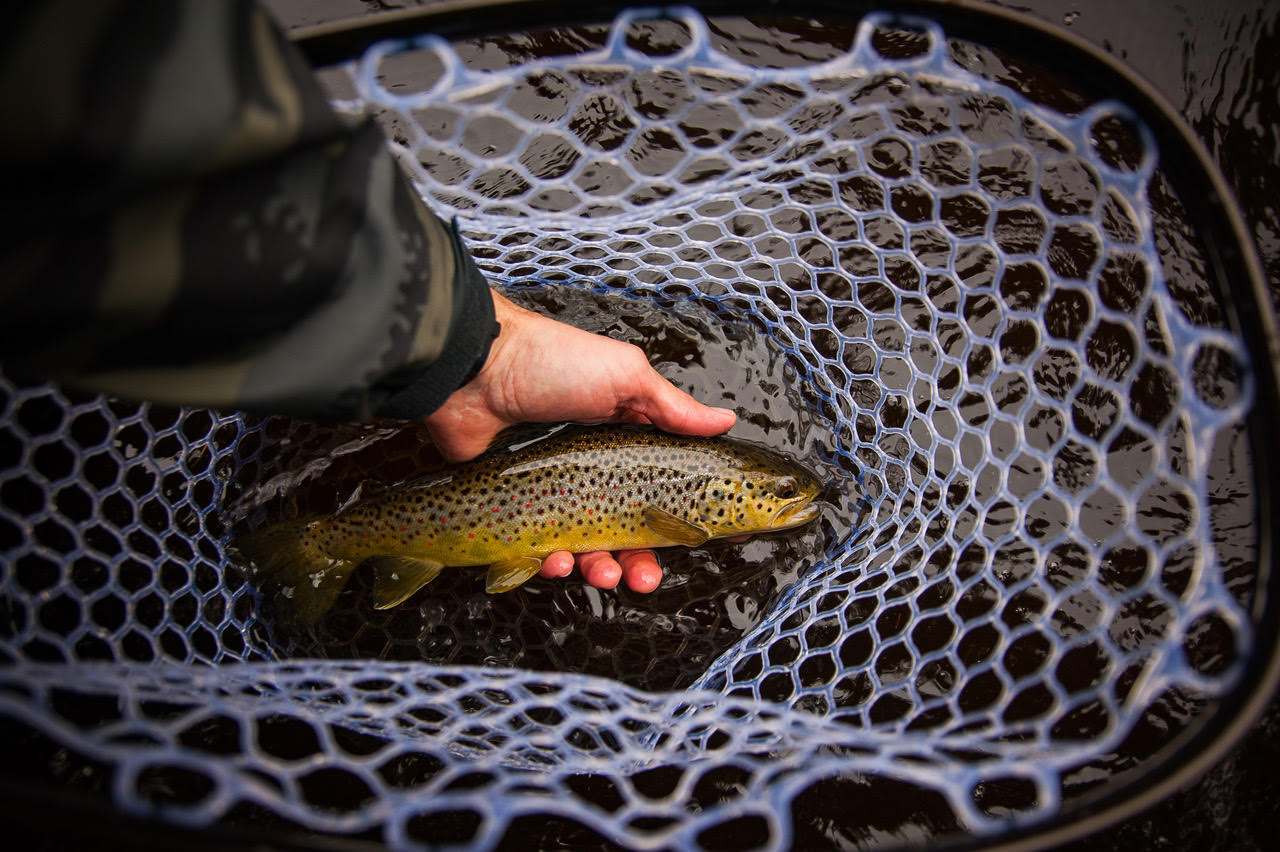
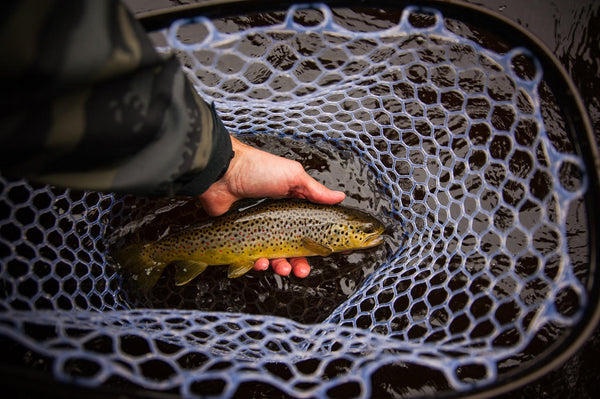
Fly Fishing Small Streams for Wild Trout Is Without Question My Favorite Piscatorial Endeavor
Aside from the lack of crowds, the gorgeous surroundings, and the all-too-eager trout, small streams offer endless learning opportunities. The lessons garnered from creeks, streams, and brooks can be applied to all aspects of trout fishing.
The following are a few of the tactics I have learned from my experience on smaller waters that I fish frequently both on my own and when guiding clients as well.
1. Fish Are Everywhere... Seriously Though
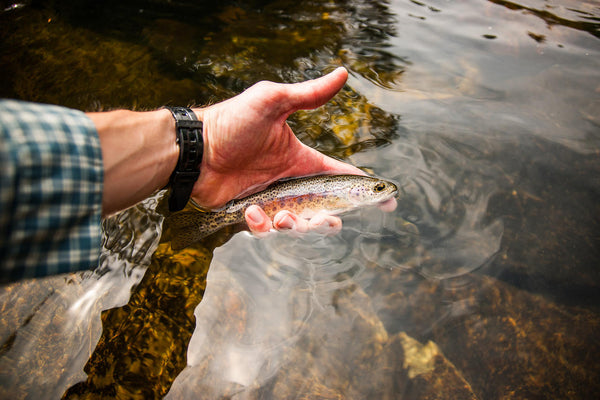
I remember taking a client out once on one of my favorite brook trout streams. He mentioned that he wanted to learn where trout live to better place his fly. He was convinced that trout only live in the few perfect spots that have been ingrained in our fishing culture.
After about the tenth or eleventh trout smashed a fly in water where my client would have never cast a fly he looked up at me with the wry smirk that often follows an angling epiphany. Thanks to the cramped nature of smaller streams, we can often let our flies fish in water that we might consider sub-optimal and, more frequently than not, we learn that trout are everywhere.
I ran into that same client about a year later and he just smiled and said “I feel like I’m cheating!”
5 Tips to Help You Fish the Unseen Part of a Hatch
I am continually surprised where trout will pop up, and while there certainly are pools, runs and structure that are a more favorable habitat than others, never be afraid to do a little exploring with your fly — especially on little streams.
2. Wear Camouflage (Or Earth Tones at Least)
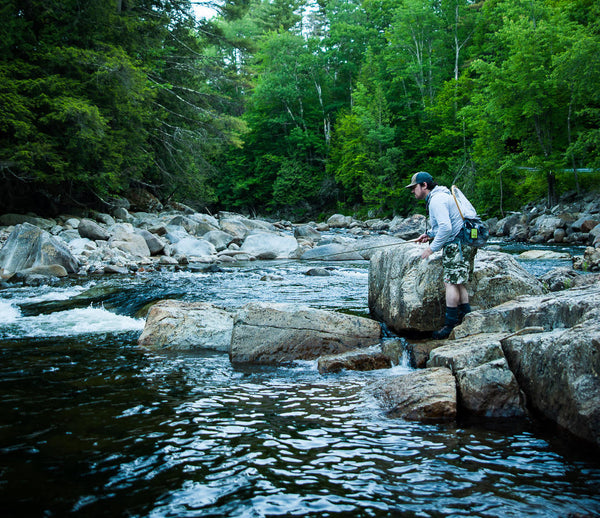
Fly angler Mike Kaz rocking some camo shorts.
While most of my friends and family would concur that the last thing I need is more camouflage (especially in the form of trucker hats — admittedly I have a problem), I would argue that for small stream fishing, especially the crystal clear, high mountain variety, you simply can’t have enough camo.
I can’t tell you how many times I’ve watched trout hectically dart to safety from a mere reconnaissance head poke or from clients with bright colors approaching a pool. But, before you go on a shopping spree that you can blame on me to your significant other, let’s back up.
Trout Fly Fishing: 3 Bad Habits to Break
The real gist of this tactic is to simply avoid wearing neon/bright clothing that is completely out of place with your surroundings. The key is to know the colors and surroundings of where you plan on fishing and to try your best to blend in. I always recommend muted earthy colors to clients when fishing any type of water and if the right camo is an option, even better.
While you may not be the most fashionable angler on the water, you’ll certainly be more successful.
3. Be “Very Sneaky!”

Camo is (as aforementioned) awesome. But there is no better camouflage than being thoughtful and stealthy with your movements. Remember the butler in the movie Mr. Deeds? Multiply his many furtive maneuvers tenfold.
If you’re not scraping your stomach over rocks, crawling hands and knees to each hole, you aren’t fishing. Okay, so I may be exaggerating a skosh, but I promise that it never hurts to be extra sneaky in any of your fishing adventures. A couple of points I like to emphasize are sun angle, the use of obstructions and our height on the water.
Sun Angle
Sun angle is an often underused tactic. I always recommend clients keep track of their shadow and, if possible, try to keep the sun on their face. Unfortunately very few trout waters are perfectly oriented so we need to consider a few variables when assessing the next pool. Where will we make the smallest shadow? Is one side of the better than the other for casting?
Use of Obstructions
Are there any obstructions we can use to our advantage? On a lot of the small brooks I fish there are massive boulders that make an excellent place to hide. In addition, I try to always pay attention to what the movement of my line and rod might do. Will false casting spook fish? The last time I checked bright lines whipping through the air aren’t a natural occurrence on small streams, or any water for that matter. So what type of cast will spook the least amount of fish? The bow and arrow cast is a great option to consider.
The bow and arrow cast is not just for situations where obstructions or tight quarters limit our casting ability. With a little practice this can be a deadly way to minimize the need for false casts that could otherwise spook the fish you are targeting. One of the biggest advantages to this cast, is the low profile from which we can execute a quality delivery.
Follow This 5-Point Checklist for Better Czech Nymphing
Height on the Water
Height is rarely an advantage on trout streams. While those images of an angler stood atop a boulder hucking copious amounts of line look awesome, they aren’t very realistic. A majority of the time the lower we can be, the more effective we are, especially when casting. What's going to cast a smaller shadow, you standing up casting a 7 to 8-foot fly rod, or you hunched down doing a sly bow and arrow cast? You get the idea.
4. Get Creative
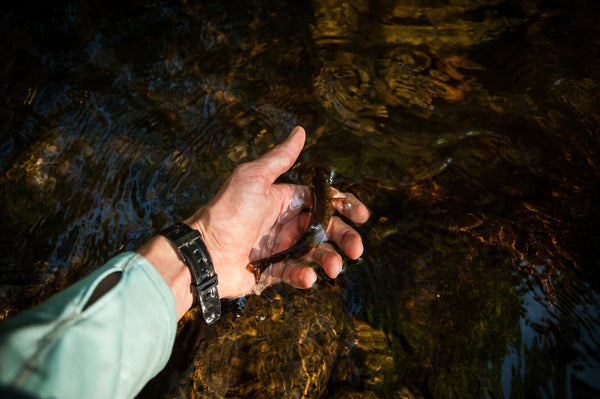
One of my favorite small streams to fish is extra tricky because for a few of the fish residing in it, a 7’ 3wt is optimistic at best while conversely chucking a 9’ 5wt can be just short of madness. That said, the advantages of the length and weight outnumber the clumsy awkwardness, hence the requisite creativity needed to fish.
While making long beautiful casts is super fun, you should also develop your short game. In addition to the bow and arrow cast, get creative. While some purists might protest against anything wavering from the "10 to 2" casting stroke, you can rest assured that they won’t be clogging your local small waters.
This Will Change the Way You Fly Fish Pressured Waters
I’ve tried all manner of casts from downright ugly lob casts to water hauls to even pitching the fly by hand (in really tight quarters). The options are limitless and to be honest it can be incredibly satisfying to catch a trout on some harebrained, on-the-spot creation of a cast.
Don’t be afraid to get a little “out there” with your casts, those are the ones that make the best stories.
5. Choose Your Flies Wisely

A soft hackle fly tied with a Nymph-Head Heavy Metal bead does the trick nicely!
Small streams seem to carry the stigma of being easy places to fish. While that can certainly be true and is without doubt one of the reasons I love them, small streams, like all waters, can prove to be very selective and difficult. When you find yourself on a brook and the resident trout seem uninterested in your offerings, try the following strategies.
Move Your Fly!
My first go to when trout seem inactive is move the fly. This is a strategy that applies to all trout fishing. Never be afraid to skate, twitch, skip, bounce, or strip your fly. I always try to get a few good dead drifts just in case, but if nothing shows interest, by all means move your fly on the next cast. You’ll be amazed by the results you’ll get just by twitching a fly.
Moving a fly accomplishes a few things for us. Firstly, it gives the fly life — when you really watch aquatic insects a majority of them move on the surface. Think of a caddis flopping and fluttering around. Trout are keyed into this movement.
In addition, the disturbance on the water can also trigger a trout to strike. On several occasions I’ve watched trout strike a fly that was moved well behind their lie.
Lastly, moving a fly can cause an instinctual reaction — trout are not fond of food escaping. After all, eating is one of their main hobbies.
Change Your Fly and Come Prepared With Options
Along with the stigma of being easy to fish, a lot of small streams also have the stigma that all you need is a couple caddis flies and you're all set. Again, these are the ideal conditions and I too love the days when I never change a fly, but with that said, keep in mind that having a few different patterns can greatly increase your success.
I like to always have a few terrestrial patterns — beetle/ant patterns are deadly on my local waters.
I also recommend having a few mayfly and caddis patterns in various sizes. Very rarely do I ever go anywhere with out a few wet flies. Even on the slowest days a wet fly swung, stripped, or skated can be incredibly effective.
Tips From a Fly Fishing Guide: 5 Simple Things You're Probably Overlooking
Finally, I always have a few brighter nymph patterns. Having a brighter selection allows for a more Euro style approach to nymphing. Indicators can be detrimental on small waters not to mention a pain to cast with a smaller rod. The Nymph-Head Heavy Metal Copper and Heavy Metal Lightning Bug are some of my favorite patterns to bring along; their bright colors make them easy to track and therefore help with indicating strikes.
Get Out There and Fish!
The next time you head to your favorite creek, brook, or stream, keep these tactics in mind and by all means swap your existing fishing clothing with the camo equivalent (completely kidding… or am I?). Remember to think outside the box, get creative, and prove yourself wrong. Happy fishing!
Want More Content Like This?
Join the Flymen Mailing List at the Bottom of the Page!
About Sean Platt:

Favorite Fish: Brook Trout
Home Waters: ADK Blue Lines
Instagram: @troutskibum & @seanplattphotography
Sean is a full-time fly fishing guide at The Hungry Trout Resort in Wilmington, New York. Growing up in the High Peaks Wilderness of the Adirondack Mountains with a forest ranger for a father, Sean was instilled with a reverence for wild places. This love has inspired him to seek a path that combines his passions with ways to give back to both the people and places that have ultimately shaped him. Having spent seven years as a wilderness ranger and ski patroller in both the Adirondacks and Colorado, becoming a fly fishing guide was a natural progression and one that continuously inspires him.
When Sean is not sharing his passion for fly fishing with others, you can find him searching for wild brook trout in high mountain streams, chasing his beautiful and talented partner, Hannah, up mountains or patrolling the slopes at Whiteface Mountain Resort.


Encouragement at its finest! Thank you for writing this.
New to fly fishing. Trying to learn all I can
I can relate.
Good advice
Great information- you can teach old fishermen new tricks.
Mark Yuhasz
Leave a comment